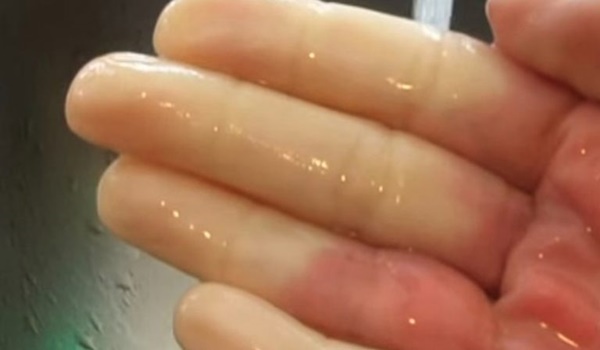Raynaud’s syndrome is a rare disorder that affects about 5 percent of the U.S. population. It affects the blood vessels, or arteries, that distribute the oxygen from the heart to the other body parts, and narrows them, reducing the blood flow to the extremities.
This is also known as vasospasm and in most cases, it develops in brief episodes. At first, the skin appears white, and then blue, until the blood flow returns. The affected body parts feel cold and numb. Moreover, you can also experience tingling, burning, throbbing, swelling, or stinging.
The symptoms usually dissipate within 15 minutes, until the blood flow normalizes again.
If you notice blood circulation issues during cold weather, or during times of anxiety or stress, you may suffer from this syndrome.
First of all, you should know that there are two types of Raynaud’s: Raynaud’s disease, which is less severe, more common, and doesn’t have a known cause, and Raynaud’s phenomenon, which is a result of an environmental trigger or a certain condition( like lupus, scleroderma (a connective tissue disease that leads to thick, hard skin), rheumatoid arthritis, atherosclerosis, or carpal tunnel syndrome), and is more serious.
This disorder usually affects the toes and fingers, but it can also cause symptoms in the lips, nose, nipples, and ears.
According to Dr.Mercola:
“No blood test can diagnose Raynaud’s disease, but two other tests may be recommended to narrow the possibilities:
Cold stimulation test: A device that measures temperature is attached to your fingers and then your hands are dipped briefly in cold water. The device shows how quickly your fingers return to normal temperature. With Raynaud’s, this can take more than 20 minutes.
Nailfold capillaroscopy: The doctor puts a drop of oil at the base of one of your fingernails and then looks at the nail under a microscope. If abnormal arteries can be seen, it may indicate s scleroderma or another phenomenon associated with Raynaud’s.”
There is no treatment for Raynaud’s syndrome, but it is easier to prevent flare-ups if you know the triggers. Here are 9 strategies that can help you avoid another unpleasant episode:
— Cold temperatures are the most common trigger of this syndrome, so when the temperatures are low, avoid holding a cold drink, washing the hands in cold water, and wear gloves when taking something out of the freezer.
— Nicotine raises the risk of developing Raynaud’s syndrome, so it is crucial to give up this detrimental habit
— Relieve stress and anxiety by finding a way to relax, since they have been linked to more frequent Raynaud’s attacks
— An injury to the feet or hands, after an accident, a frostbite, or a surgery, can cause the symptoms of this disorder, as the arteries may start producing less blood
— Run warm water over the hands and feet during attacks, to shorten the episode or reduce the severity.
— Some medications, like birth control pills, high blood pressure meds (such as beta blockers), ADHD medications, certain cancer medications (such as vinblastine), and some migraine medications raise the risk of having a Raynaud’s attack
— Take a daily dose of 120-240 mg ginkgo biloba to boost the circulation in the fingertips
— Acupuncture can help you reduce the frequency of the attacks
— To dilate the blood vessels, take 100 mg of niacin twice daily.


